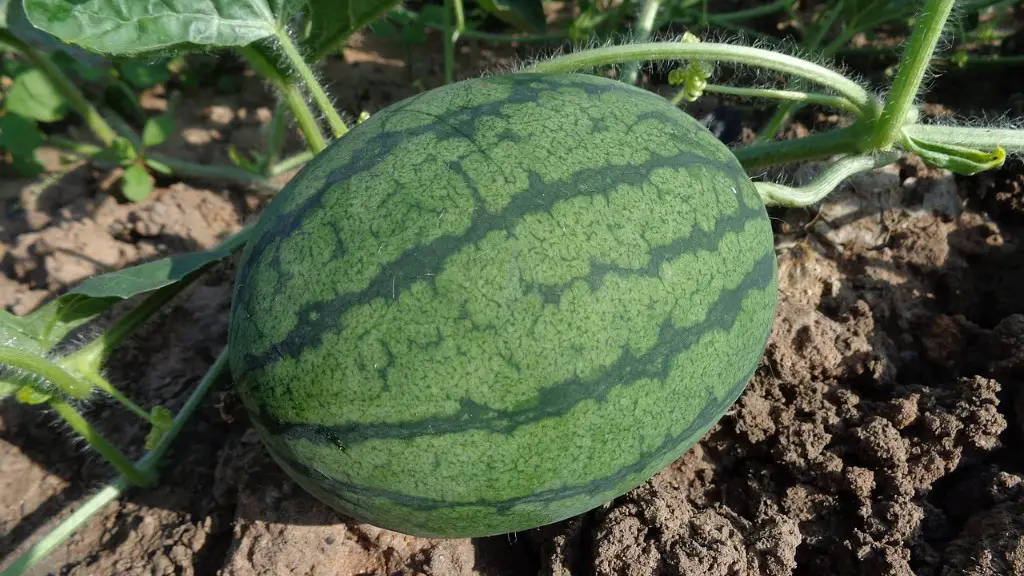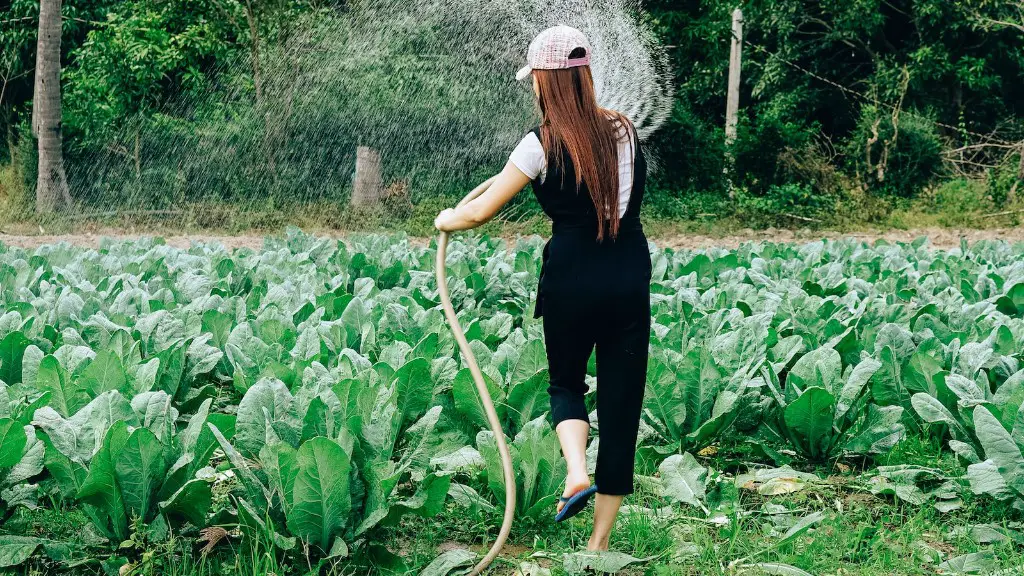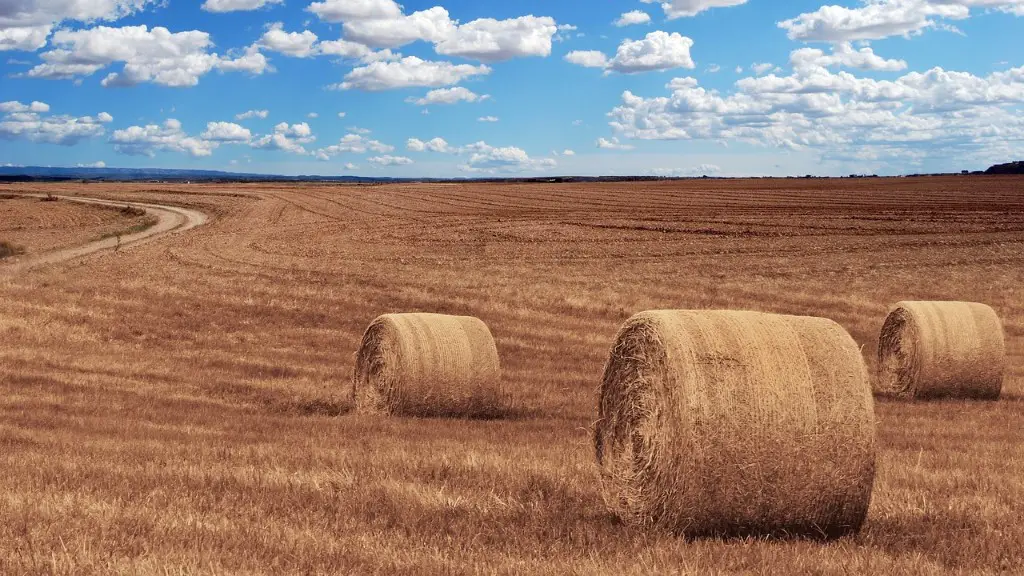As climate change causes the Earth to warm, it has a direct effect on agriculture. Farmers must adapt to the changes in temperature and precipitation, which can lead to increases in crop yields and quality. With warmer weather, farmers can grow more heat-tolerant crops and expand their production into new areas. They may also be able to lengthen the growing season for some crops. However, climate change can also have negative effects on agriculture, such as more frequent droughts, floods, and insect infestations.
When the climate becomes warmer, it can have a number of effects on agriculture. One is that it can cause an increase in evaporation, leading to drier conditions. This can make it more difficult for crops to grow. Additionally, warmer temperatures can also lead to more pests and diseases, which can damage crops. Finally, warmer weather can lead to extreme weather events, such as floods or droughts, which can also negatively impact agriculture.
How does hot weather affect agriculture?
Hot weather can have both positive and negative impacts on agriculture. On the one hand, hot weather can help crops grow more quickly. On the other hand, hot weather can also dry out the land, which can lead to and exacerbate drought. This can create a situation where crops no longer have the moisture they need. Even if the surface temperature is cooler due to agriculture, plants remain susceptible to the impacts of heat waves, which can slash farmers’ yields.
Climate change is a major threat to food security. It can disrupt food availability, reduce access to food, and affect food quality. For example, projected increases in temperatures, changes in precipitation patterns, changes in extreme weather events, and reductions in water availability may all result in reduced agricultural productivity. This can lead to higher food prices, and even food shortages in some areas. Climate change also increases the risk of disease and pests, which can further reduce crop yields. All of these impacts threaten the food security of both developed and developing countries.
How has climate affected agriculture
Climate change is already affecting agricultural production, with farmers and ranchers experiencing more extreme weather conditions and changes in precipitation. These changes are likely to continue and intensify, posing serious challenges to the food security of the United States.
Farmers and ranchers will need to adapt their practices to cope with changes in temperature and precipitation. They may need to plant different crops, change the timing of their planting and harvest, and develop new methods of dealing with pests and diseases.
It is important for agricultural producers to stay informed about the latest research on climate change and its effects on agriculture. They can also work with extension agents, crop consultants, and other agricultural professionals to develop strategies for adapting to a changing climate.
As the climate continues to change, the agricultural sector will be increasingly challenged to maintain production levels and protect resources. Producers and land managers must adapt their practices and management strategies to account for the new conditions. Additionally, the sector must develop new technologies and processes to mitigate and adapt to climate change.
The agricultural sector is a significant contributor to the US economy, and climate change presents a real threat to its production. In order to protect the sector and the economy, it is essential that producers and land managers take action to adapt their practices to the new conditions.
Why is heat important in agriculture?
There are many uses for heat on farms. Heat is used for livestock production (poultry and pigs), drying arable crops, heating greenhouses and polytunnels. Farms have diversified to create offices, business centres or leisure facilities. There is often the scope to install district heating systems.
Temperature changes affect seed germination, leaf development, flowering, harvest, and fruit production. However, the effects of temperature on crop development are often implicitly presumed to be associated with air, but not soil temperature.
How temperature and heat affect our crops?
When there is a heat wave, the soil temperatures increase. This causes the plant roots to be less able to compensate for the varying levels of moisture within the soil profile. When the soil temperature rises above the optimum threshold, the plant’s water and nutrient uptake can be impeded, causing damage to the plant components.
Soil temperature is an important factor in farming because it can affect plant growth. If the soil is too cold, it can slow down plant growth or even prevent plants from germinating. On the other hand, if the soil is too hot, it can damage plant roots and leaves. That’s why farmers need to be aware of the soil temperature in their fields in order to ensure that their plants are able to grow and thrive.
What temperature is best for agriculture
Thus, plants should generally be grown at warm temperatures of 70°F to 75°F to avoid excessively long production times. By growing cold-sensitive crops at warm temperatures, you can actually reduce the amount of energy used for heating — on a per-crop basis — than if they were grown at cooler temperatures.
Photosynthesis is the process that produces organic molecules from simple inorganic molecules from the sun’s energy.
Respiration is the process of breaking down organic molecules to produce energy.
Plants grow best when the daytime temperature is about 10 to 15 degrees higher than the nighttime temperature. Under these conditions, plants photosynthesize during optimum daytime temperatures and then curtail respiration at night.
photosynthesis:
The light energy liberates an electron from water and liberates molecular oxygen from carbon dioxide.
The free electron is used to reducing power to split water molecules producing molecular oxygen and protons.
The reducing power is then used to synthesize ATP from ADP and inorganic phosphate.
ATP and NADPH are used tosynthesize organic molecules from simple inorganic molecules
respiration:
The organic molecules are broken down to produce ATP.
The ATP is then used to power other cellular processes.
What are the two climate factors that influence agriculture?
The increased temperature, changed precipitation conditions and increased CO2 content in the atmosphere are the major climatic factors that are affecting the crop production. The rise in atmospheric temperature will lead to loss of soil moisture and will increase the crop demand for water. All these factors need to be taken into consideration while planning for the future crop production.
If you’re looking to add some heat-loving plants to your garden, there are a few options to choose from. Tomatoes, eggplant, melons, peppers, and cowpeas are all great choices that will thrive in warmer temperatures. For those who want to add a little bit of spice to their garden, okra and southern peas are both excellent options. And last but not least, sweet potatoes are a great option for those who want a plant that can handle the most heat.
Why do plants grow faster in warmer ground
Most of the plants we grow require an optimum temperature of 25 degrees Celsius to grow best. This is because this temperature is optimal for photosynthesis to occur. If the temperature is too hot or too cold, photosynthesis will not occur as efficiently, and the plant will not be able to grow as well.
Air temperature and plant temperature can differ significantly depending on the time of day and the weather conditions. In general, warmer air temperatures will result in warmer plant temperatures. However, there are a number of factors that can influence this, including air movement, humidity, and the type of plant.
How are plants affected by temperature?
Excessively low or high temperatures may cause: plant stress, inhibit growth, or promote a spindly appearance and foliage damage or drop Cool nighttime temperatures are actually more desirable for plant growth than high temperatures.
Most plants suffer when the weather turns hot enough for a certain period of time. It causes irreversible damage by way of plant function or development. This isn’t merely droopy leaves in the heat of the afternoon; it’s things like stunted growth, leaf drop, leaf scald, failure to flower, or failure to produce seeds.
How do plants respond to high temperature
When temperatures rise, plants experience proteotoxic stress, which can damage proteins. To survive these short periods of heat stress, plants activate a molecular pathway called the heat-shock response. This heat-shock response is common to all organisms and protects cells from damage. By activating this pathway, plants can survive periods of heat stress and continue to function properly.
Some Like it Hot! Best Vegetables to Grow in the Heat
Sweet Potatoes Grown from transplants called slips, sweet potatoes love hot weather but do require a long growing season.
Peppers Sunflowers Zucchini & Summer Squash Swiss Chard Okra Green Beans Eggplants
More items…
Warp Up
As the climate continues to warm, agricultural production is likely to be affected in a number of ways. One direct effect of warmer temperatures is an increased risk of crop failure due to heat stress. Prolonged periods of high temperatures can cause plants to wilt and/or to produce lower yields. In addition, warmer conditions can also lead to an increased incidence of pests and diseases, which can further reduce crop yields. Indirectly, climate change is expected to cause changes in precipitation patterns, which could lead to either drought or flooding. Either of these conditions could have a devastating impact on agriculture.
Climate change is already affecting agriculture in a number of ways, including through more frequent and more intense heat waves, droughts, and floods. These extreme weather events can ruin crops, damage infrastructure, and harm livestock. As the climate continues to warm, we can expect these and other effects to become more common and more severe, with potentially devastating consequences for global food security.





